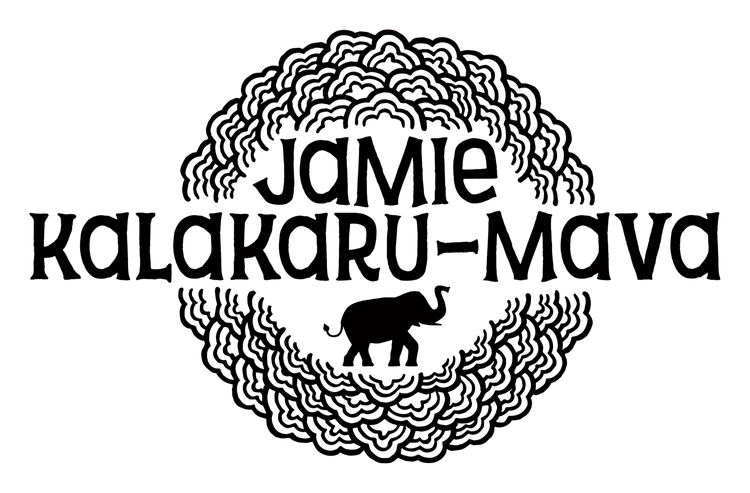From the beginning, I had some helping hands and good company. Through the gallery I also got to know other artists and makers in the community. These artists were very supportive of the work we were trying to do at Altered Esthetics. Several would come by during setup to help me hang art, and they and other artists were great about giving feedback on execution and themes.
Almost two years into the gallery at this point, things were busy, but going well. We had curated several wonderful art exhibitions, were becoming more and more recognized in the press, and were growing considerably in scale. We were adding exhibitions annually with increasing numbers of participating artists, and our audience was increasing.
We were already operating as transparently as possible, and converting the sole proprietorship to a fully fledged 501(c)(3) nonprofit seemed to be an excellent fit for the next stage for the gallery. I had outlined these first steps during my time in New York, and when I returned I dived more fully into the process. I read about nonprofits and strategy and took a variety of courses and workshops. I took classes at Springboard for the Arts, a local nonprofit focused on supporting individual artists. While the classes I took on business planning and grants were great, they seemed geared more towards artists and less towards arts organizations as a whole. Classes in arts, culture, and creative place-making for organizations were a budding movement I would soon become a part of.
Mela & KeyKey
In the meantime, the heat at the gallery space was . . . minimal. I would often sit in the frigid office, typing away with fingerless gloves, a space heater underneath the desk to keep the chill at bay. Mela was my husky I had adopted earlier that year, and I would often bring her with me to the gallery when I would host open hours. The cold didn’t bother her quite as much as me, and she was great company to have along.
As I was getting ready to leave one day I peeked down below the gallery desk and smiled at Mela, who grinned at me from her dog bed. (Mela is the elvish word for love.) “Ready to go?” I asked. She grinned a husky smile at me, immediately jumping up excitedly and trotting to the door. I turned off the computer and the space heater and locked up the gallery. Our paperwork to apply for 501(c)(3) status was almost complete.
We crunched through the snow on our way to the car, which was parked alongside the long row of buildings. Mela hopped in and, in her husky voice, “woo-woo’d” at me as I let the car warm up for a second. I peered over my shoulder to check either direction up Quincy and backed up slowly. What I missed, unfortunately, was the car further up the road. Hidden behind the topper of the truck I was parked next to, he was perfectly invisible from my view.
It was one of those accidents that happens in slow motion— and I don’t mean that figuratively. When I saw him coming I did what I could to pull back up to my spot quickly but was thwarted by the snow and my tires slipping. He saw me pulling out and tried to swerve, but couldn’t do so quickly enough in the slippery, icy mess of a road. We hit each other going probably no more than 10 miles an hour, his car crashing, crunching slowly into my passenger side. The window shattered into a million pieces around poor Mela, who sat there stunned.
Mela was okay. I was okay. Nobody was hurt, though she was a little skittish about car rides from that point on. The damage to the car was mainly cosmetic, thankfully. I “fixed” my window with duct tape and plastic, and that’s the way it remained until the car finally bit the dust completely a few years later.
While nerve-wracking, it could have been far worse. The parking along the side of the gallery had always been an issue, and over the years that followed, Quincy Street would begin to see ten times the traffic it saw then. The accident, however, wound up giving me a key to the next step in the gallery’s functionality.
Those first few years were fairly experimental. Altered Esthetics started out as part gallery, part studio, and I had intended to do more prosthetics and mask work at first. But the gallery and community components grew quickly.
The paperwork for filing our 501(c)(3) status was almost one hundred pages of forms and documentation, but the biggest hurdle itself was the nonprofit filing fee—at the time an insurmountable $500. I decided that I would use what was left of my savings to pay for the fee—instead of fixing my car. When the final, official 501(c)(3) letter came almost a full two years later, it felt like a golden ticket, a seal of approval confirming we were on the right path and that I had made the right decision. The car died eventually due to unrelated natural causes, but the gallery continued rolling along.
This post is adapted from It’s Never Going To Work: A Tale of Art and Nonprofits in the Minneapolis Community with illustrations by Athena Currier. Post graphics by Jamie Schumacher. ©2018 Jamie Schumacher.
It’s Never Going To Work is a light-hearted, illustrated book that offers real-life insights on founding a community space and nonprofit. It provides tools, tips, resources, and camaraderie to community organizers and anybody attempting something new.



